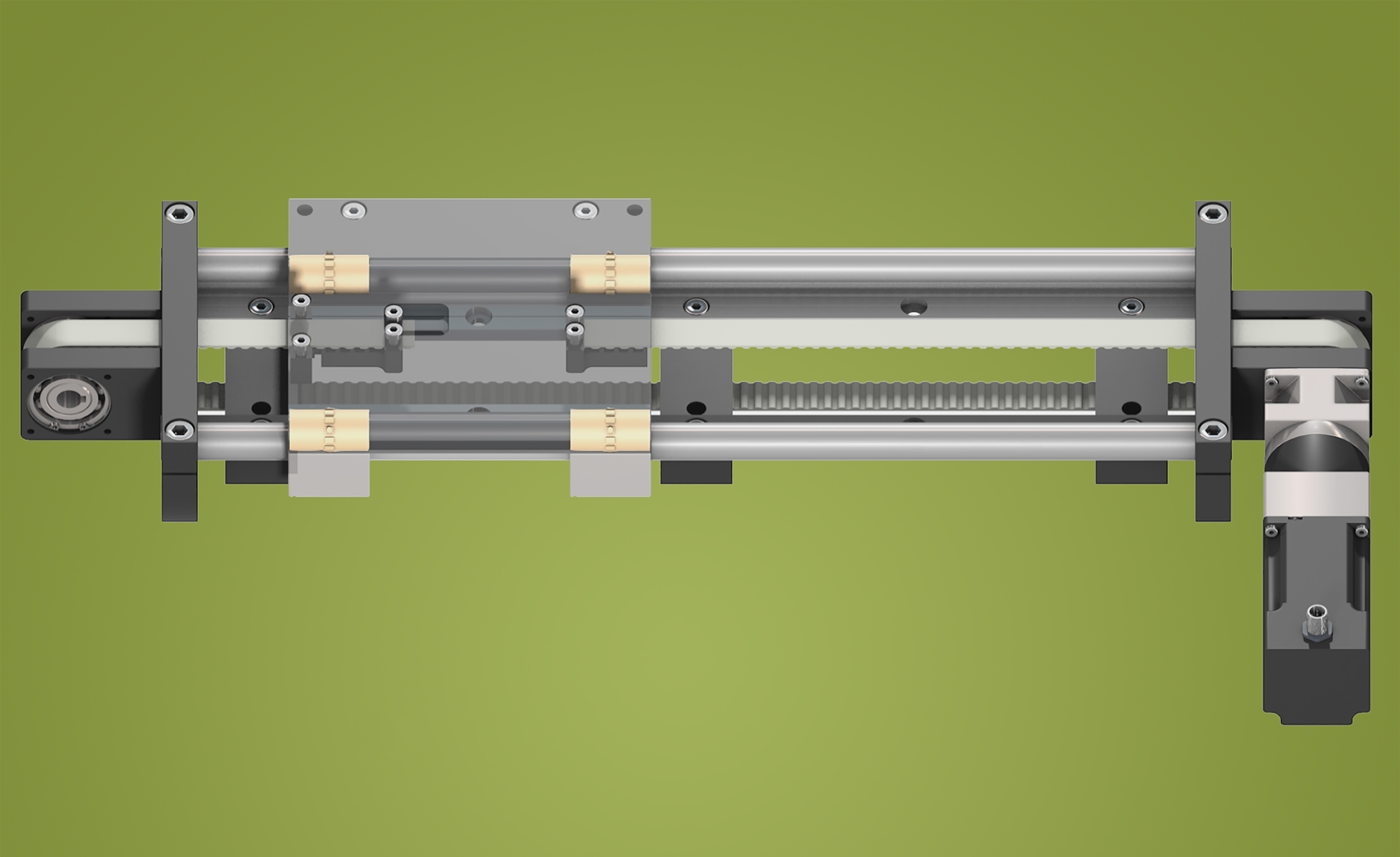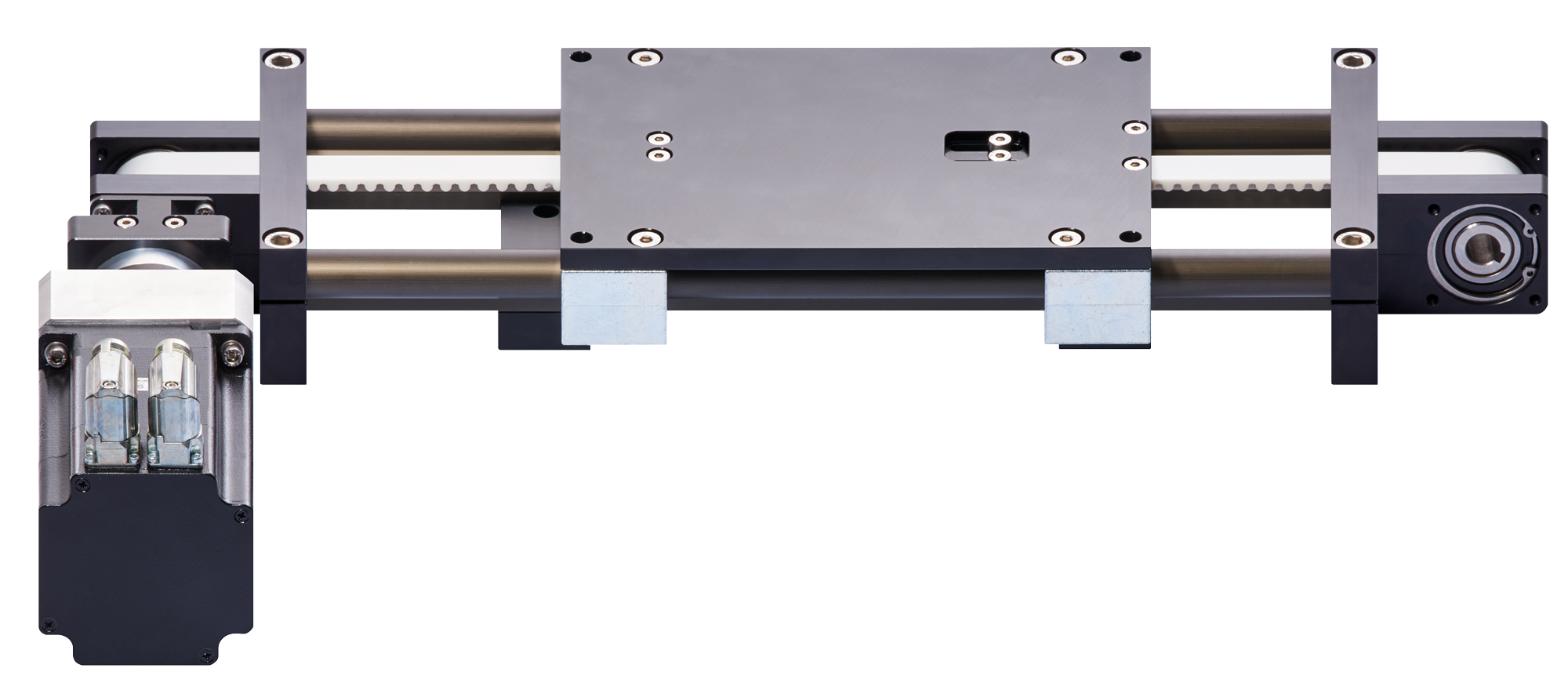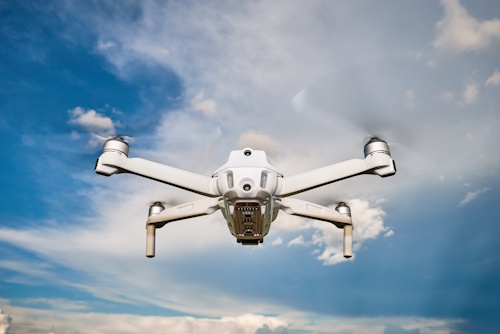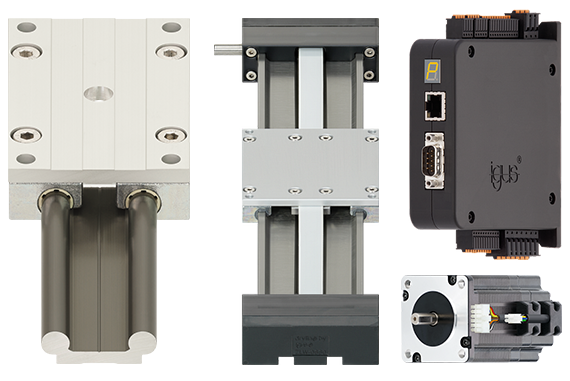What is a Linear Actuator & Why Would You Want One?

Original article by Matt Mowry
When I first started working in technical sales for igus® back in the year 2000, we had three series of linear slides: drylin R, drylin T, and drylin N. drylin R and T were dimensionally similar to the round-shaft and profile guides that already existed within the industrial marketplace at the time—of course, our parts were made of dry-running plastic bearings and components—and drylin N was a more compact flat-rail.
Around 2003, we introduced what now many consider to be our flagship linear bearing product, the drylin W series, which expands upon the many benefits from the three series mentioned above by amalgamating them into one flagship series. It was after the introduction of the drylin® W that we began adding a new line of products—fully assembled linear actuators.
What is a linear actuator?
Starting in the early 2000s, many linear bearing manufacturers began to notice an upward trend in regard to customers wanting what sounded like a ‘plug and play’ type linear bearing solution—a linear actuator. A linear actuator converts rotary motion into a linear motion that can travel on a set of linear bearings. Usually, this rotary motion is converted by using a lead screw, a timing belt, or a rack and pinion system; however, actuators can be composed of many different components depending on what you are looking for. At the bare minimum, the drive method (aka timing belt or lead screw) would be incorporated into the linear bearing system as a one-piece, bolt-on solution. Most manufacturers also offer additional options, such as motor mounts and flanges, couplings, and motors. Other accessories, like motor and data cable assemblies, proximity sensors and cables, as well as motor drivers, might also be offered. To make things even more complicated, many manufacturers also offer fully assembled gantry robots, or linear robots, which usually combine two or three axes together to cover 3 degrees of motion.

igus ZLW belt-drive with motor coupled to the drive shaft

igus SAW with motor coupled to the lead screw
What are the different types of linear actuators?
Though linear actuators perform a relatively simple task, there are many different kinds that are suited for different application areas and industries. Below are some of the most common types of linear actuators.
Mechanical linear actuators: The simplest type of linear actuator, mechanical linear actuators are actually a group of specific linear actuators. This group includes screw-driven, belt-driven, ball screw, and rack and pinion actuators. Each of these can be hand-powered through a control wheel or knob, or with an electric motor. In cases where a mechanical actuator is electrically powered, it is known as an electro-mechanical actuator.
Hydraulic linear actuators: Hydraulic linear actuators have a different configuration than mechanical or electromechanical actuators. Hydraulic actuators use an incompressible fluid to fill a cylinder, moving a piston inside the cylinder and generating motion. This design allows for a constant level of force to be maintained without needing to continuously supply fluid.
Pneumatic linear actuators: The key difference between pneumatic and hydraulic linear actuators is the use of pressurized air, rather than hydraulic fluid, in pneumatic actuators. Pneumatic actuators are even simpler in design than hydraulic actuators, though they require a compressor to maintain constant air pressure. Air is also a safer option than both hydraulic fluid and electricity when used in extreme temperatures.
Why use an assembled linear actuator when you could cobble one together yourself?
Save design time. Cobbling your own linear actuator together means going to one supplier, configuring one part that meets the requirements of your project, ordering that one part number, then rinse and repeat for all components involved. With a preassembled linear actuator, less time is spent checking the specs of the linear guides, the screws, and the axial bearings; less time is spent making drawings of custom machined housings, brackets, gears, etc. This allows you to spend more time designing the valuable aspects that your equipment offers to a customer, and less time designing at the component level for each linear motion application.
Limit your lead-time and purchasing costs. Generally speaking, if you are ordering one part from one supplier at a time, your purchasing department will be spending a lot of time hounding multiple different suppliers and checking on parts. However, with an already assembled linear actuator, you reduce this time, in addition to cutting purchase orders.
Improve your quality. Let the linear actuator manufacturers put their money where their mouths are. At this point, they are selling you a pre-made solution, so it should obviously be tested and assembled correctly. If any aspect of that actuator is not working properly, then they are responsible.
Reduce your assembly time. Let the linear actuator manufactures assemble the parts that they have designed to fit together—the ones that they produce and test on a daily basis. This provides you with less to worry about in regard to ensuring that the shafting is aligned, that the proper clearance is set between the components to function properly, that the belt is set with the right tension, and that the motor is attached correctly. Allow the linear actuator manufacturer to do their job so that you can focus all of your efforts onto the overall build while reducing the amount of time assembling subcomponents.
How to choose the right type of linear actuator
Choosing the right type of linear actuator for your application can be difficult, and depends upon a myriad of different factors. Some of these include required load capacity, precision, noise level, speed, and the environment the actuator will be used in.
Load capacity: Load capacity is one of the most critical factors to consider when choosing a linear actuator. Load capacity determines how much of a load an actuator can move and hold in place (dynamic and static load respectively). Load capacity will vary manufacturer to manufacturer, even among the same type of actuators.
Speed: The speed an actuator can move is directly related to its payload. An actuator moving significant amounts of weight will inherently move slower than one moving much lighter weights. Understanding an actuator’s duty cycle and how it relates to the load capacity and speed it operates at is absolutely essential to choosing the correct actuator for any application.
Precision: The precision required from an actuator is largely dependent on the application it’s being used in. Precise applications such as automated pipetting or aerospace applications will require significantly more precision than heavy-duty palletizing applications or lane adjustments in the packaging industry.
Environmental conditions: The environment an actuator is operating within is another important consideration during the selection process. Actuators that require lubricating greases — ball screw actuators, for example — aren’t suited for particularly dirty or dusty environments, as the grease will attract dirt and dust and cause premature wear and eventual failure. In extreme temperatures, pneumatic or mechanical actuators are ideal over electric or hydraulic actuators.
Noise level: Noise levels aren’t as vital to the performance of an actuator, but it’s still important to account for in applications that are in close proximity to workers or customers. Large amounts of noise being generated can be distracting, distressing, or even harmful in extreme cases.
Installation space: The installation space of an application is another major factor in choosing a linear actuator. Medical applications like hematology analyzers offer limited installation space, requiring miniature linear actuator solutions. Other applications, such as large gantry robots, don’t have such limitations and can make use of a much wider variety of actuators.
Related: Hygienic screw-driven actuators for hematology analyzers & pipetting technology
Conclusion
So, there you have it—a brief explanation of what linear actuators actually are and why they are becoming more commonplace within the realm of machine design. So many applications require linear motion functionality, and we are seeing more and more each day.
If you are interested in getting an idea of how linear actuators work in regard to an application, igus® offers several tools that can help check the functionality of our drylin linear actuators, including some nice motor options—also, had to drop a shameless igus® plug. Additionally, we offer another configurator that focuses on our popular HTS Lead Screw-Driven Actuators with Shafts, which allows you to customize your components, add motors and manual accessories, as well as make custom modifications to the lead screw output. After you have configured your linear actuator according to your exact specifications, you can get a 3D step file, a 2D drawing, an exact price, and then order directly online!
If you are interested in speaking further with an expert about the linear motion requirements of your application, please do not hesitate to contact our drylin Product Manager. You can also check out this video to learn when you should use a linear plain bearing vs. a recirculating ball bearing.



